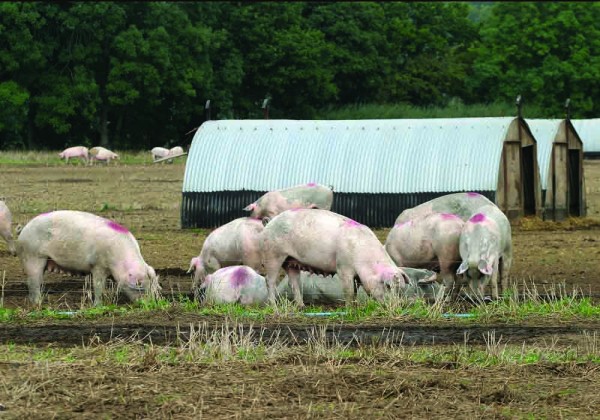Duncan Berkshire is one of the lead vets within the five-vet pig team at Bishopton Veterinary Group, based in Yorkshire
It can be difficult to clear your head at this time of year, having had the excesses of Christmas, along with the disruption to the normal routines on farm. January has equally provided plenty of talking points with regards to people’s choices of diet, environmental concerns and impact, and, of course, the fact that we have crossed the starting line for the next stage of negotiations over our international relations.
The winter has not been ‘standard’ so far, with very mild weather generally in place, compared with the longer-term averages, along with vast quantities of water falling from the sky and hanging around. This creates a different challenge from usual for the pigs that we look after.
Pigs are creatures of habit, with large temperature swings being challenging to them. This often creates opportunities for things to go wrong on farm, whether it be growth, behaviour or health. Those large swings have not been apparent so far, but humidity has been very high with all the rain and subsequent saturated ground. This means that, even in automatically-controlled fan-ventilated buildings, the air that is with the pigs has been damp.
So why is this important? Wet, cold conditions are ideal for a lot of different infections to spread effectively and over large distances, whether that be airborne or on things.
Viruses love being transported on wet air, particularly those that attack the respiratory system such as PRRS and ’flu. Circulation of these infections in weaners can be rife and there is evidence that certain farms have had significantly higher challenges this winter period.
Bacterial infections are often opportunistic and give most clinical signs when our pigs are under that little bit more pressure, with a humid environment being a major one. Infections already present on your farm will often show ‘flares’ when the mornings are misty and wet, particularly Streptococcal and Glasser’s diseases.
How can we effectively reduce the humidity of the air in our buildings without resorting to highly expensive pieces of kit, never mind attempting this in a naturally ventilated straw yard or a tent in a field?!
One area that we at least have a bit more control over is some of those diseases that are spread by contact from pig to pig, and farm to farm. Swine dysentery is the most well-known. We are in the middle of perfect dysentery spreading weather so make sure you are following the #MuckFreeTruck procedures.




